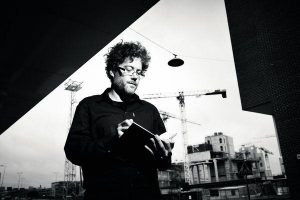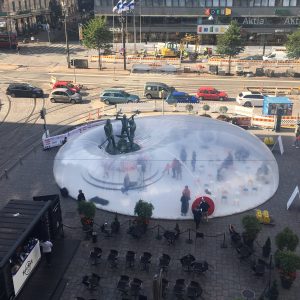Excited to present my research at Gothenburg University 28.2.2017.
Thanks to Linda Karlsson Hammarfelt and everyone at Gothenburg University to make my visit possible!
http://hum.gu.se/aktuellt/Kalendarium/Aktuellt_detalj?eventId=70125920343
Narrating the Urban Waterfront in Crisis. Juxtaposing Futures of the Waterfront under Threat in Literary Fiction and Planning
Urban waterfronts worldwide are currently undergoing eventful transformations: in a range of cities, post-industrial waterfronts are being redeveloped to address changing living preferences and working conditions, while new challenges are beckoning on the horizon in the form of threatening environmental change and rising sea levels. How is the experience of the urban waterfront in crisis, and the uncertainty of possible futures, shaped in and by narrative? In this lecture, I will analyse narratives of the waterfront from two distinct perspectives and looking at two specific case studies. My focus will be on recent developments and literary texts set in New York and Helsinki. I will look, first, at the way in which literary fiction frames the experience of a waterfront in crisis, and how it presents possible alternative futures. In the context of New York City, key texts will be Ben Lerner’s 10:04 (2014) and Nathaniel Rich’s Odds against tomorrow (2013), as well as Jonathan Lethem’s Chronic City (2009). In the context of Helsinki, I will focus on Antti Tuomainen’s Parantaja (The Healer; 2010), Annika Luther’s De hemlösas stad (City of the Homeless; 2011), and Hannu Mäkelä’s novel Hyvä jätkä, a book commissioned by the city of Helsinki to promote the West Harbour development (Good Chap; 2009). Second, and considering narrative and rhetoric models for framing alternative storyworlds, I will examine how, in New York City’s comprehensive waterfront plans (1992, 2011) and in Helsinki’s strategic and detailed urban planning documents, the simultaneous possibility of alternative storyworlds structures policy narratives of the urban future.
My lecture will engage with current debates in literary spatial studies, narrative planning, literary ethics, and environmental criticism. The aim is to foreground the materiality of planning narratives (whose projected futures are intended to be petrified in concrete and glass in due course), while simultaneously drawing attention to the rhetoric and literary antecedents of such narratives. Ultimately, I hope to gain a better understanding of what kinds of paths towards the future are postulated by two very different kinds of texts – planning and fictional texts – and what room they leave for agency and choice in our relationship with our environment.




